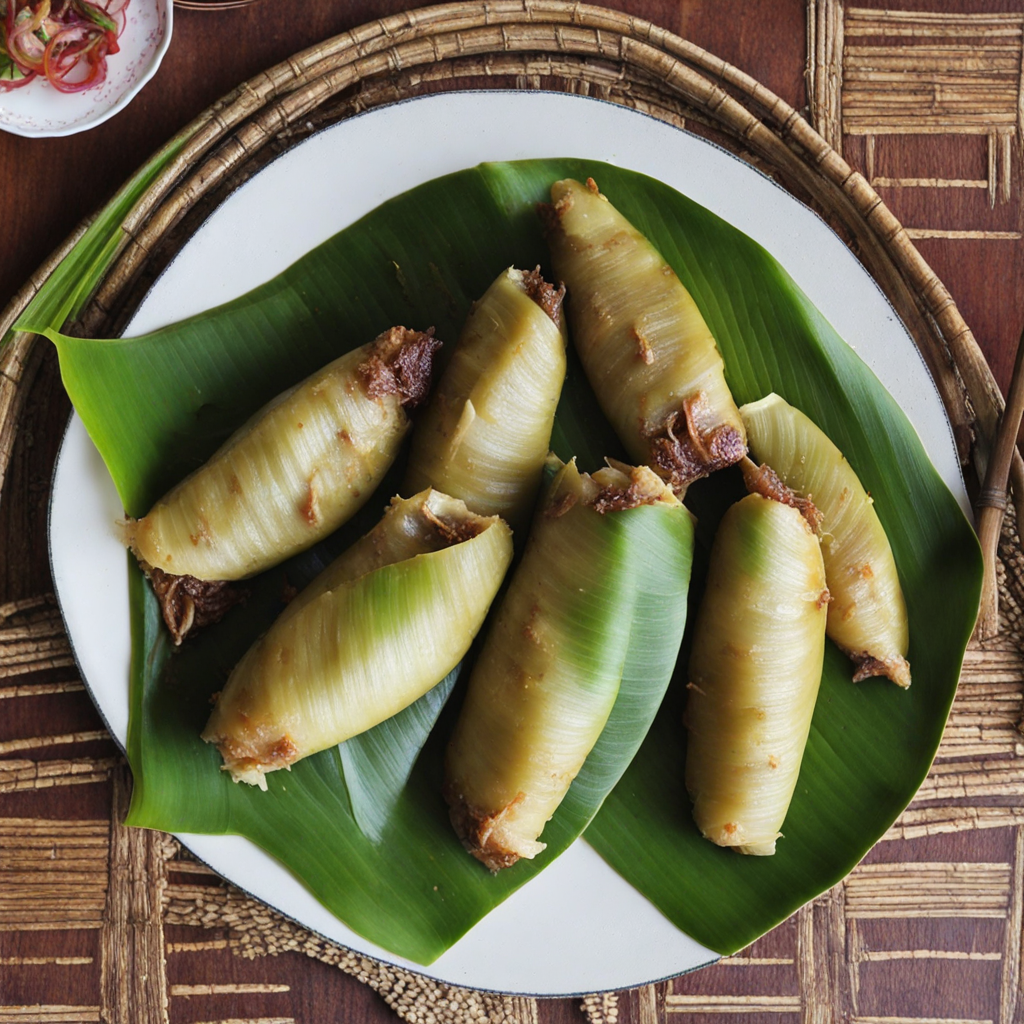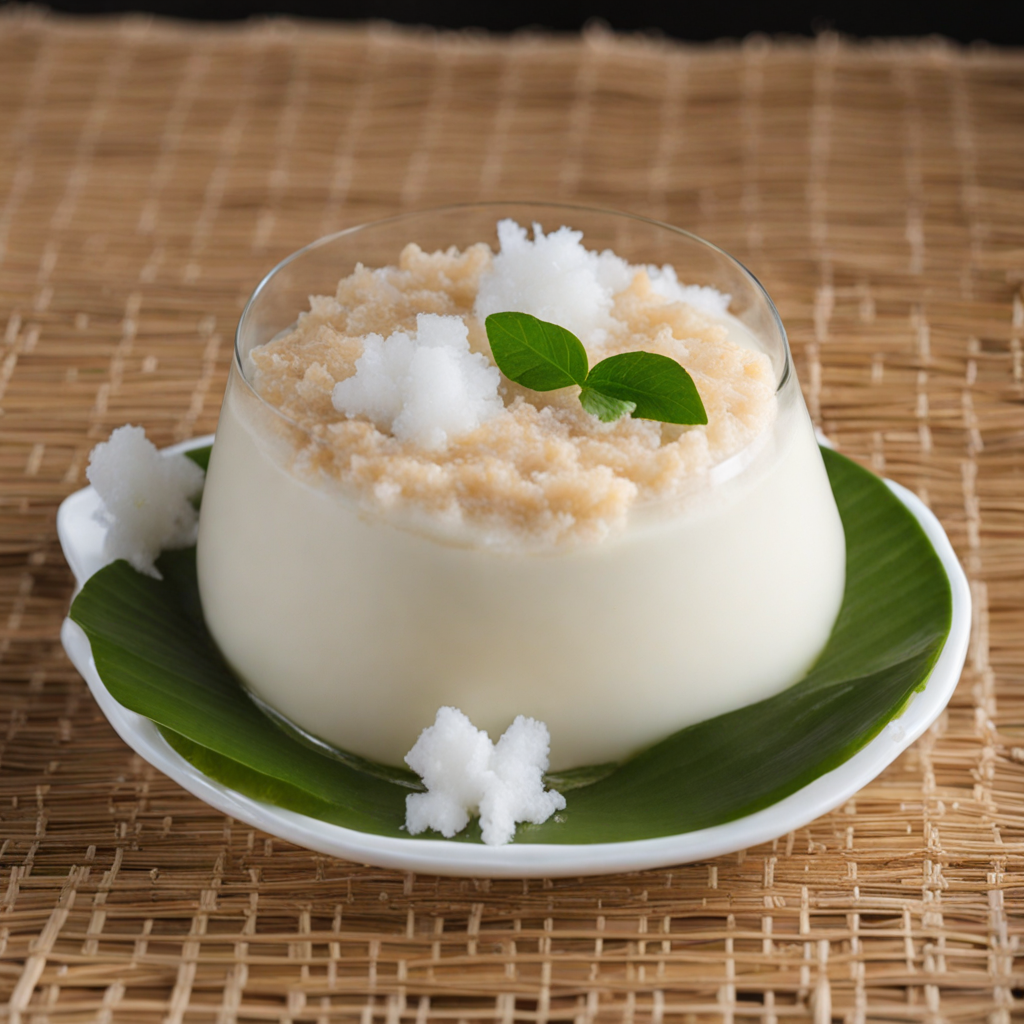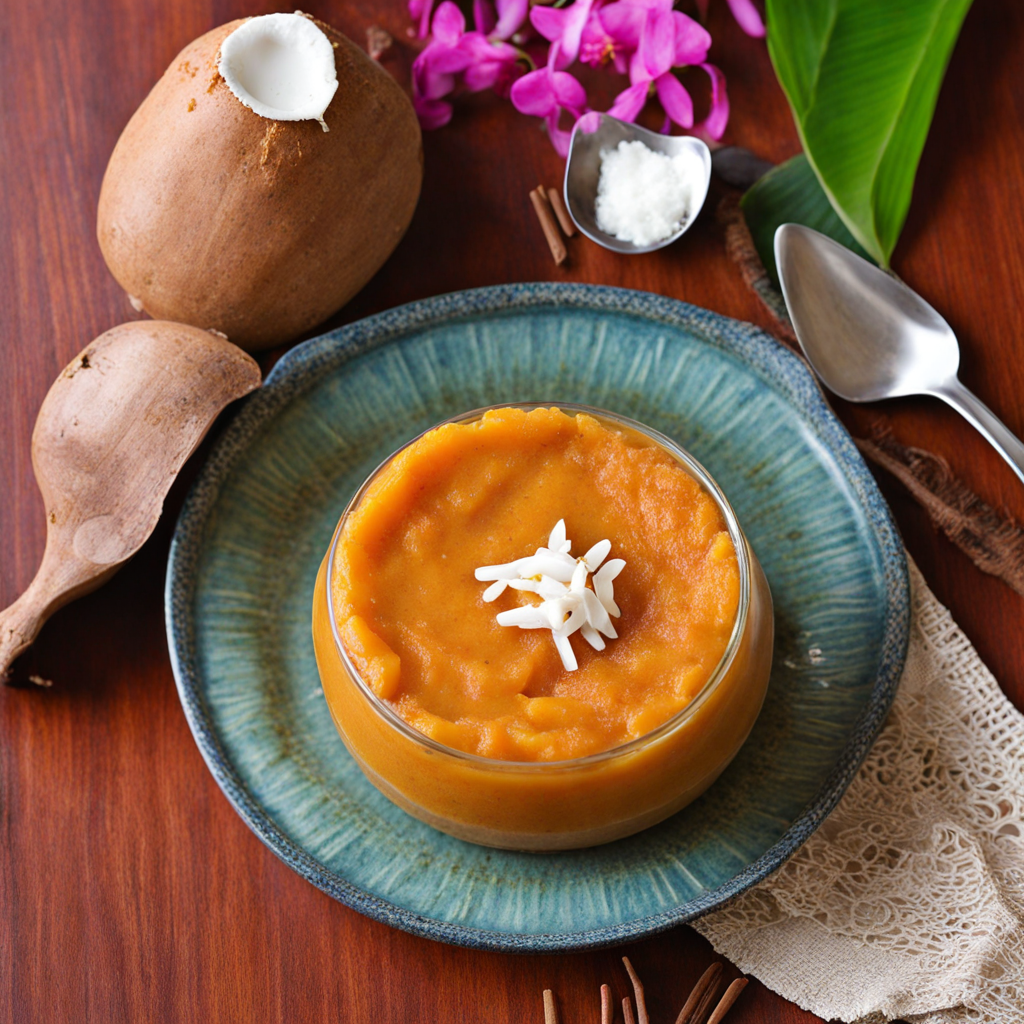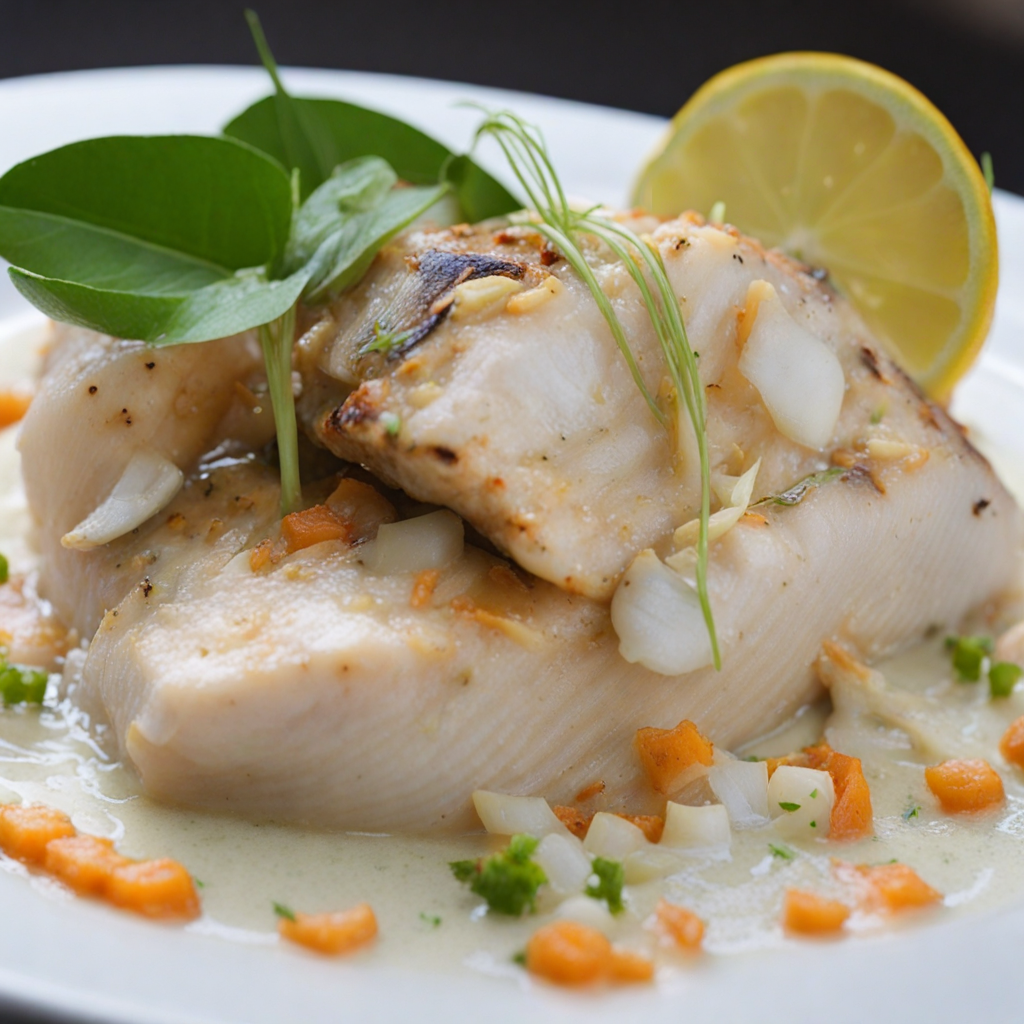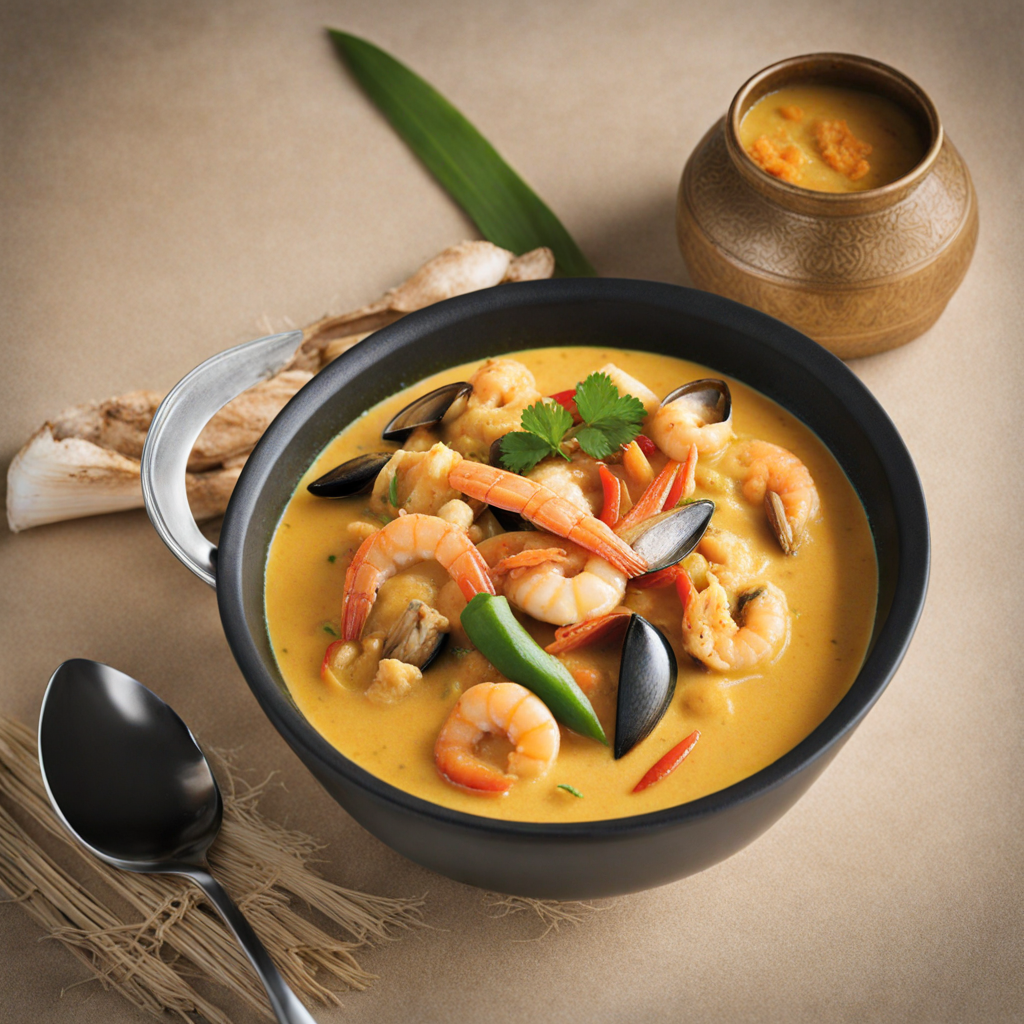Palusami
Palusami is a delightful and unique dish hailing from the small island nation of Tuvalu, characterized by its rich, creamy texture and vibrant flavors. At its core, Palusami consists of young taro leaves, which are tenderly wrapped around a savory filling of coconut cream and sometimes minced meat, commonly corned beef or fish. The leaves are often cooked until they are tender and infused with the luscious coconut cream, resulting in a dish that is both comforting and indulgent. The combination of the earthy taro leaf and the sweet, creamy coconut creates a harmonious balance that is a hallmark of Tuvaluan cuisine. The preparation of Palusami is a labor of love, often involving traditional cooking methods that enhance its flavor profile. The wrapped bundles of taro leaves are typically baked in an underground oven, known as an umu, which allows them to steam gently in their own juices while absorbing the fragrant essence of the coconut. This method of cooking imparts a smoky depth to the dish, elevating it beyond a simple meal to an experience filled with the island's culinary heritage. The final presentation is usually a vibrant green bundle of leaves, exuding a rich aroma that beckons food lovers to dive in. When you take your first bite of Palusami, you are met with an explosion of flavor that is at once sweet, salty, and umami-rich. The soft, tender taro leaves give way to the creamy, luscious filling, creating a mouthfeel that is both delightful and satisfying. Often served with rice or as part of a larger feast, Palusami is more than just a dish; it represents the communal spirit of Tuvalu, where food is a way to connect with family and friends. Each bite tells the story of the islands, making Palusami a must-try for anyone looking to explore the flavors of this beautiful Pacific nation.
How It Became This Dish
## The History of Palusami: A Culinary Treasure from Tuvalu Origins and Ingredients Palusami, a beloved dish from Tuvalu, is a culinary gem that embodies the essence of Polynesian cooking. This traditional dish primarily consists of taro leaves filled with a mixture of coconut cream and other ingredients, which are then wrapped and baked or steamed. The basic components of palusami reflect the lush tropical environment of Tuvaluan islands, where taro—a staple crop—thrives in the volcanic soil, and coconuts are abundant along the coastlines. The origins of palusami are deeply rooted in the agricultural practices and the rich natural resources of the Pacific islands. Taro, known locally as "kalo," is not only a significant food source but also holds cultural importance; it is often associated with various legends and is a symbol of sustenance and survival. The use of coconut cream in palusami highlights the versatility of coconut, which has historically provided food, drink, and materials for shelter and tools. Cultural Significance Palusami is more than just a dish; it is a reflection of Tuvaluan identity and cultural heritage. Traditionally, this dish is served during communal gatherings, celebrations, and feasts, reinforcing the importance of family and community in Tuvaluan society. The act of preparing and sharing palusami illustrates the values of cooperation, togetherness, and the sharing of resources, which are central to the Tuvaluan way of life. In Tuvalu, food is often intertwined with rituals and ceremonies. Palusami has a place in various cultural practices, often served during significant events such as weddings, funerals, and religious ceremonies. This connection to cultural events underscores the dish's role in fostering social bonds and preserving traditions. The preparation of palusami is often a communal activity, where family members gather to create this dish, passing down techniques and recipes through generations. Development Over Time As a dish, palusami has evolved over time, influenced by both internal and external factors. The arrival of European explorers and traders in the 18th and 19th centuries introduced new ingredients and cooking methods that gradually blended with traditional practices. While the core ingredients of taro leaves and coconut cream remain unchanged, variations have emerged as local cooks started to incorporate additional elements. For instance, modern versions of palusami may include fillings such as minced meat, fish, or vegetables, reflecting a fusion of traditional and contemporary culinary practices. The adaptability of palusami allows it to cater to diverse palates while still honoring its roots. The introduction of new proteins can be traced back to the impact of globalization and the availability of ingredients through trade, highlighting a dynamic aspect of Tuvaluan cuisine. Despite these changes, the essence of palusami has permeated through time. The dish is often associated with the island’s identity, making it a point of pride for Tuvaluans. In recent years, efforts have been made to promote and preserve traditional Tuvaluan cuisine, with palusami at the forefront. Food festivals, cooking classes, and cultural events have helped to revive interest in authentic culinary practices, ensuring that future generations appreciate and continue the legacy of palusami. Palusami in the Modern Era In the contemporary context, palusami has gained recognition beyond Tuvalu, finding a place in the global culinary scene. As the world becomes more interconnected, there is a growing appreciation for traditional island cuisines, and palusami has become an ambassador of Tuvaluan culture. Food enthusiasts and chefs around the world are exploring Polynesian flavors, and palusami's unique combination of ingredients and cultural significance presents an enticing opportunity for culinary exploration. Restaurants and food bloggers focusing on Pacific Island cuisine have begun to showcase palusami, often adapting recipes to fit different dietary preferences, such as vegan or gluten-free options. The dish's versatility allows it to be reimagined without losing its essential character, appealing to a broader audience while still honoring its origins. Moreover, the Tuvaluan diaspora has played a significant role in keeping the tradition of palusami alive. As Tuvaluans settle in various countries, they carry their culinary traditions with them, introducing palusami to new communities. Potluck gatherings and cultural festivals in countries like New Zealand, Australia, and the United States often feature palusami, allowing for the sharing of heritage and the celebration of Tuvaluan culture. Conclusion Palusami is not merely a dish; it is a cultural artifact that encapsulates the history, values, and resilience of the Tuvaluan people. Its origins in the lush landscapes of Tuvalu, coupled with its deep cultural significance, have ensured that it remains a cherished food tradition. As it continues to evolve and adapt in the face of globalization and modern culinary trends, palusami serves as a reminder of the importance of preserving cultural heritage while embracing change. From communal gatherings to international recognition, palusami stands as a testament to the richness of Tuvaluan cuisine and the enduring power of food to connect people across generations and geographical boundaries. In every bite of palusami, one can taste the history, passion, and spirit of Tuvalu, making it a dish that not only nourishes the body but also feeds the soul. As we look towards the future, the continued celebration and innovation surrounding palusami will ensure its place as a cornerstone of Tuvaluan identity, a culinary tradition that is as rich in history as it is in flavor.
You may like
Discover local flavors from Tuvalu



